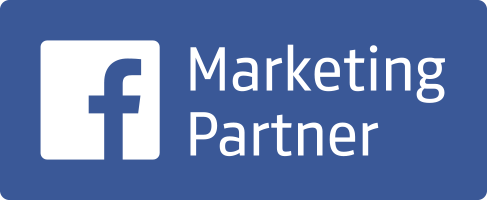
The SaaS industry has experienced a significant amount of growth in recent years. However, with this growth comes an increasingly competitive landscape. SaaS companies are constantly battling to acquire new customers, retain existing ones, and drive overall growth. This is where effective SaaS marketing comes into play.
In this article, we will explore some of the most common problems faced by SaaS marketers and provide actionable strategies and solutions to overcome them. Addressing these obstacles can set your SaaS business on the path to success.
Understanding the SaaS Marketing Landscape
The current state of the SaaS market is characterized by market saturation and increased competition. SaaS companies need to work harder than ever to differentiate themselves and stand out from the crowd.
Here are some of the key performance indicators (KPIs) that SaaS businesses should track to measure their marketing success:
- Customer Acquisition Cost (CAC): The total variable cost of acquiring a new customer. This feature helps businesses understand their spending efficiency in attracting new customers.
- Customer Lifetime Value (CLTV): The total amount of money a customer generates over their relationship with the company. This variable and attribute indicate the long-term value of a customer to the business.
A strong value proposition is essential for success in a crowded SaaS market. Your value proposition should communicate your SaaS software product or service’s unique benefits to potential customers, effectively showcasing the attributes that set you apart from competitors.
Common SaaS Marketing Challenges
Challenge 1: Generating High-Quality Leads
Defining high-quality leads
Quality leads have a greater chance of converting into paying customers. They are genuinely interested in your product or service and fit your target audience well.
Lead generation strategies
There are a variety of strategies you can use to generate high-quality leads, such as:
- Content marketing solutions: Creating valuable and informative content that attracts your target audience.
- Search engine optimization (SEO): Improving your website and content to rank higher in SERPs.
- Social media marketing: Using social media platforms to connect with prospective customers and promote your brand.
- Paid advertising: Running paid advertising campaigns on Google Ads or social media to reach an even wider audience.
Overcoming lead generation hurdles
Common hurdles in lead generation include low conversion rates and poor lead quality. Here are some tips to overcome these challenges:
- Create targeted content: Tailor your content to your buyer personas’ specific needs and interests.
- Optimize your landing pages: Ensure your landing pages are clear, concise, and persuasive, with a strong call to action (CTA).
- Nurture your leads: Don’t let it go cold once you have captured a lead. Implement a lead nurturing campaign to keep your brand top-of-mind and move leads further down the sales funnel.
Challenge 2: Improving Customer Acquisition
The customer journey in SaaS
The customer journey is the process a prospective customer experiences before becoming a paying customer. It typically involves stages such as awareness, consideration, decision, and action.
Effective lead nurturing strategies
Lead nurturing is an important aspect of developing quality relationships with potential customers over time. By providing valuable content and nurturing leads, you can move them further down the sales funnel and increase your chances of conversion.
Conversion optimization techniques
Conversion optimization is the process of improving the percentage of visitors who complete a desired action on your website. Here are some conversion optimization techniques you can use:
- A/B testing: Testing out various versions of your website and landing pages to identify which ones convert better.
- Call to action (CTA) optimization: Making your CTAs clear, concise, and irresistible.
- Website usability optimization: Ensuring your website is easy to navigate and use.
Challenge 3: Enhancing Customer Retention
Understanding customer churn
Customer churn is the rate at which customers cancel their subscriptions. It is an important metric for SaaS businesses, which can significantly impact revenue growth.
Building strong customer relationships
Here are some things that you can do to build strong customer relationships and reduce churn:
- Provide excellent customer service: Ensure your customers are satisfied with your product or service.
- Offer ongoing support: Provide your customers with the resources and support they need to be successful.
Implementing effective customer success programs
A customer success team can proactively identify and address customer challenges, ensuring high satisfaction and retention. Critical elements of a successful customer success program include:
- Onboarding new customers
- Providing ongoing support and resources
- Measuring customer health and satisfaction
- Identifying opportunities for upselling and cross-selling
Leveraging customer feedback
Analyzing customer feedback is crucial for improving customer satisfaction and retention. You can collect feedback through surveys, reviews, and customer support interactions.
Challenge 4: Driving SaaS Growth
Expanding market reach
To achieve sustained growth, SaaS companies must continually expand their niche marketplace reach. This involves identifying new target markets, developing tailored marketing campaigns, and adapting your product or service to meet the growing needs of various customer segments.
Upselling and cross-selling
Increasing revenue from existing customers is an incredibly important strategy for SaaS growth. You can enhance customer value and boost revenue by offering additional products or services.
Product-market fit and expansion
Ensuring your product aligns with customer needs and preferences is crucial for long-term success. Continuously gather customer feedback and iterate on your product to maintain a strong product-market fit.
Scaling marketing efforts
As your SaaS business grows, you must scale your marketing efforts to keep up with demand. This involves optimizing processes, automating tasks, and investing in marketing technology to support growth.
Overcoming SaaS Marketing Challenges
1. Developing a Robust Marketing Strategy
A well-defined marketing strategy is necessary for achieving your business-to-business goals. Here are the key components of a successful SaaS marketing strategy:
- Aligning marketing with overall business goals: Your marketing efforts should support your company’s broader objectives and contribute to overall business success.
- Creating a comprehensive marketing plan: Develop a detailed plan outlining your target audience, messaging, channels, tactics, and KPIs.
- Setting realistic and measurable objectives: Establish clear and achievable goals for your marketing campaigns, such as increasing lead generation, improving conversion rates, or boosting customer retention.
2. Leveraging Data and Analytics
Data-driven decision-making is necessary for the success of any SaaS business. By analyzing marketing performance metrics, you can identify areas for improvement and optimize your campaigns.
- The importance of data-driven decision-making: Using data to inform your marketing strategies can help you make more informed decisions and achieve better results.
- Analyzing marketing performance metrics: Track key metrics such as website traffic, lead generation, conversion rates, customer acquisition cost (CAC), and customer lifetime value (CLTV) to measure the effectiveness of your campaigns.
- Using analytics to optimize campaigns: Leverage analytics tools to identify trends, patterns, and opportunities for improvement.
3. Building a Strong Brand Identity
A strong brand identity helps you differentiate your SaaS business from competitors and build customer loyalty.
- Defining your brand personality: Develop a clear brand personality that resonates with your target audience.
- Consistent brand messaging: Ensure your brand messaging is consistent across all marketing channels and touchpoints.
- Building brand awareness: Implement strategies to increase brand visibility and recognition, such as public relations, content marketing, and social media.
Conclusion
Overcoming SaaS marketing challenges requires a strategic, data-driven approach. By understanding the common obstacles, developing a robust marketing strategy, and leveraging data and analytics, you can position your SaaS business for sustained growth.
Ready to tackle those SaaS marketing challenges head-on?
Let Build Media Group help you develop a customized marketing strategy tailored to your needs. Contact us today to schedule a consultation and discover how we can help you achieve your business goals.
By taking action and partnering with the right team, you can overcome challenges and unlock the full potential of your SaaS business.



